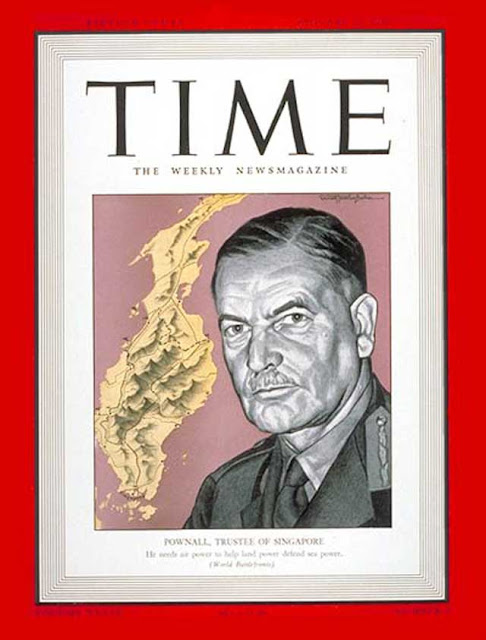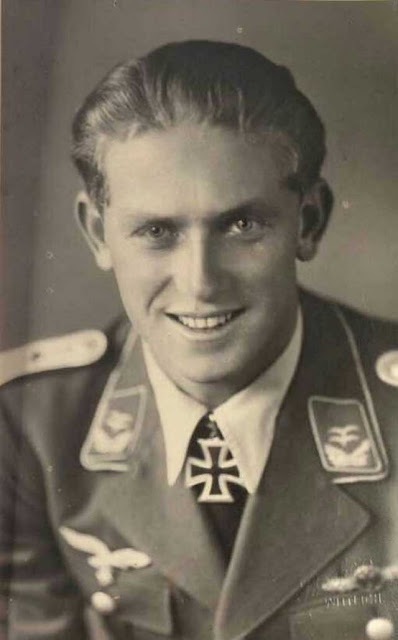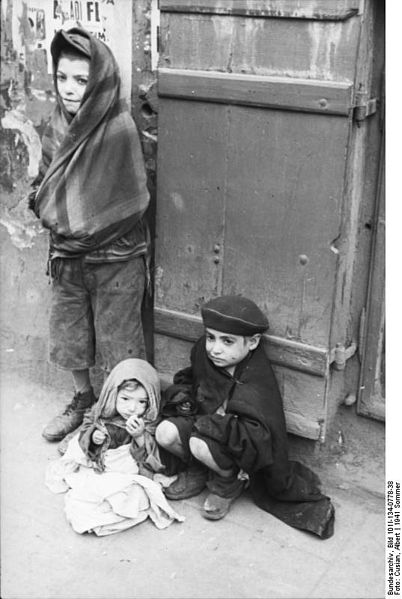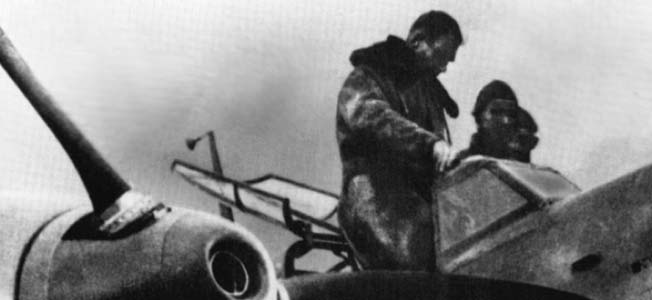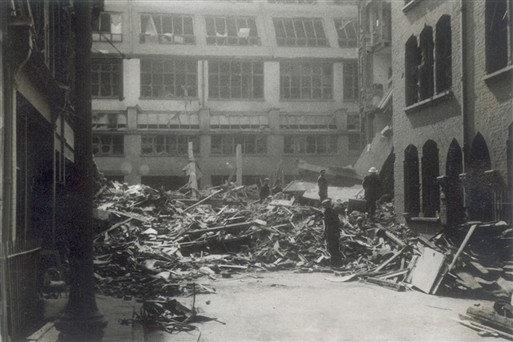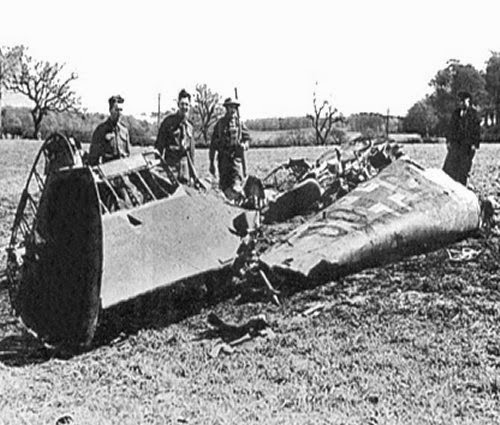Monday 12 January 1942
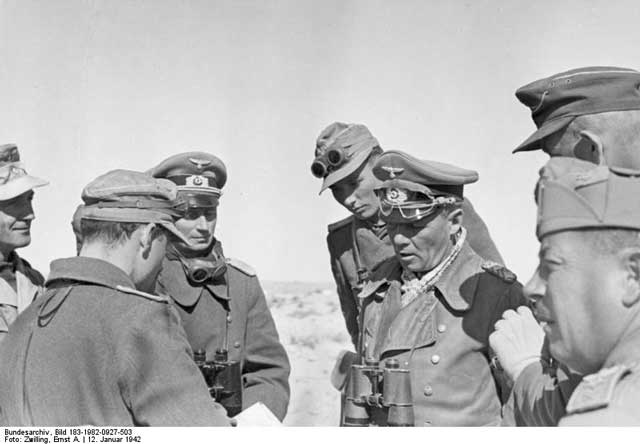 |
| General Erwin Rommel, leader of Panzer Group Africa, with General Ludwig Cruwell, commander of Afrika Korps, near El Agheila on 12 January 1942. They are meeting with leaders of Italian Division "Pavia." Rommel begins planning a counteroffensive today (Gemini, Ernst A., Federal Archive Picture 183-1982-0927-503). |
Battle of the Mediterranean: The 2nd South African Division forces the surrender of the German/Italian stronghold at Sollum on the Egyptian border early on 12 January 1942. The Sollum fortress provided an outlet to the sea for the 5,000 Italian troops holding out at Halfaya Pass, so now they are completely isolated (though the sea routes weren't very useful anyway due to Royal Navy control of the sea). The Italian defenders of the Halfaya position are dug in and determined to hold out, but they are running out of food and water and their position is hopeless. Hopeless, that is, unless Lieutenant General Erwin Rommel pulls off a miracle and stages a counteroffensive to relieve them. Such is the growing legend of Rommel that the Italians are willing to suffer extreme privations in the belief that miracles do happen and the panzers will suddenly appear on the horizon. Unbeknownst to the Italian defenders, Rommel does begin planning just such a counteroffensive today. Rommel, as is his common practice, does not inform either the Italian or German high commands. This prevents Allied codebreakers from learning of the plans. Whether the hard-pressed Italians at Halfaya can hold out until the Germans counterattack is doubtful.
Just east of Cape Spartivento, Italy, British submarine HMS Unbeaten (Cdr Edward "Teddy" Woodward) spots U-374 (Oblt.z.S. Unno von Fischel) on the surface. Damaged on 10 January 1942 by Royal Navy destroyer HMS Legion and Dutch destroyer Isaac Sweers, U-374 is unable to submerge. Commander Woodward torpedoes U-374, sinking it and killing 42 men. There is one survivor that Unbeaten takes prisoner.
Hitler orders Admiral Raeder to prepare plans for a "surprise break up the Channel" by the cruisers to reach the German Atlantic port of Wilhelmshaven. Raeder today opposes the plan, at least if it uses the channel route, but agrees to prepare and execute the operation as long as Hitler himself gives the final order to execute it. The Luftwaffe also opposes the plan but agrees to execute it as Unternehmen Donnerkeil (Operation Thunderbolt). It is planned for right before a new moon in early February 1942. The entire Channel Dash is given the codename Operation Cerberus, apparently because Cerberus in mythology is a multi-headed dog that guards the gates of the Underworld, and several German heavy cruisers (Scharnhorst, Gneisenau, and Prinz Eugen) are to make the journey.
Battle of the Pacific: US Navy Task Force 8.6, led by heavy cruiser USS Indianapolis (CA-35) and light cruisers Detroit (CL-8) and Raleigh (CL-7), escorts Amulet Force to a successful landing on Amchitka Island. This is 2,000 men under the command of Brigadier General Lloyd E. Jones. During the landing, a fierce storm hits which, along with a tricky current, causes destroyer Worden to hit a submerged rock. The destroyer loses power and it eventually drifts ashore and is broken up. There are fourteen dead, but its commanding officer, Cdr William G. Pogue, is hauled out of the water unconscious but alive.
With the Japanese seizing control of a large portion of the southwest Pacific, the US Army Air Force establishes a new southern route from Hawaii to Australia south of the Philippines. Three USAAF B-17 bombers complete the first flight from Hawaii to Australia today. The Combined Chiefs of Staff approve plans to garrison a chain of islands along this route that will include American Samoa, Bora Bora, Canton Island, Christmas Island, the Fiji Islands, and Palmyra Island.
The limits of British air defenses in Singapore are amply demonstrated today when a flight of 27 Japanese bombers is chased by RAAF Brewster Buffaloes after completing a mission over the island. The Japanese pilots manage to outrun the obsolete fighters, causing a RAAF pilot to comment, ""Bombers outpacing fighters. You've got to bloody-well laugh." On land, the Japanese forces stream through Kuala Lumpur and head toward Johore, where the British are planning their last stand on the Malay Peninsula.
At Tarakan, a triangle-shaped island less than three miles off the Borneo coast, the Koninklijk Nederlands Indisch Leger (Royal Netherlands East Indies Army, or KNIL) garrison surrenders in the morning of 12 January. The triumphant Sakaguchi Detachment and 2nd Kure Special Naval Landing Force drown 219 POWs as retaliation for losses they suffered during the Battle of Tarakan. Most of the Dutch ships based at Tarakan manage to escape, but Japanese destroyer Yamakaze and patrol boat P-38 sink Dutch minelayer Prins van Oranje as it attempts a run for safety.
The Soviet advance toward Sychevka, a train stop on the critical rail line between Vyazma and Rzhev, becomes a critical problem as the day wears on. The Germans holding the town can distinctly hear the fighting just to the east. The large German presence anchored at Rzhev would become untenable if the railway line is cut, so holding Sychevka is critical. Ninth Army commander General Adolf Strauss has his headquarters at Sychevka and remains in the town. However, all telephone and telegraph lines have been cut, so the Germans in Sychevka are out of communication with the army's own units. The Soviets have broken through on both sides, but the German hope is that by holding Sychevka itself, the railway line can be secured. The railway line already is basically out of commission at this point anyway because of snowdrifts and the disappearance of the Soviet civilians who have been operating the Soviet locomotives.
German Homefront: It is Hermann Goering's birthday, an event that is celebrated each year throughout the Reich. Among others, Reinhard Heydrich visits Goering at Karinhall, Goering's estate near Berlin.
American Homefront: President Franklin D. Roosevelt signs Executive Order 9017 establishing the National War Labor Board (NWLB). William Hammatt Davis is its first chairman. Its purpose is to prevent labor problems from interfering with the war effort. The NWLB sets wage controls for industries deemed vital to the war effort, including automobiles, shipping, railways, airlines, telegraph lines, and mining. The NWLB supersedes the National Labor Relations Board (NLRB) established in 1935. The NLRB remains in existence for matters deemed less important to the war effort and eventually resumes its original mission after the NWLB is discontinued in 1945.
The US Office of Price Administration decrees that hot dogs from now on must be made from a mixture of meat and soy meal. These are to be called "victory sausages."
Having enlisted on 10 January, the day after his recent title fight against Buddy Baer, boxer Joe Louis reports for duty at Camp Upton amid a media blitz.
1942
January 1942
January 1, 1942: Declaration By United Nations
January 2, 1941: Manila Falls to Japan
January 3, 1942: ABDA Command Announced
January 4, 1942: MacArthur on His Own in the Philippines
January 5, 1942: Soviets Plan General Offensive
January 6, 1942: US Army in Europe
January 7, 1942: Soviet General Offensive Opens
January 8, 1942: Hitler Sacks Hoepner
January 9, 1942: Battle of Dražgoše
January 10, 1942: Building the Jeep
January 11, 1942: Japan Takes Kuala Lumpur
January 12, 1941: Rommel Plans Counterattack
January 13, 1942: First Ejection Seat Use
January 14, 1942: Operation Drumbeat First Sinking
January 15, 1942: U-Boat Off NYC
January 16, 1942: Carole Lombard Crash
January 17, 1942: British Take Halfaya Pass
January 18, 1942: Soviet Paratroopers in Action
January 19, 1942: FDR Approves Atomic Bomb
January 20, 1942: The Wannsee Conference
January 21, 1942: Parit Sulong Bridge Battle
January 22, 1942: Parit Sulong Massacre
January 23, 1942: Japan Takes Rabaul
January 24, 1942: Battle of Makassar Strait
January 25, 1942: Kholm Surrounded
January 26, 1942: GIs Land in Europe
January 27, 1942: Battle of Endau
January 28, 1942: Rommel Takes Benghazi
January 29, 1942: First US Coast Guard Ship Sunk
January 30, 1942: Singapore Isolated
January 31, 1942: Army Group South Averts Disaster
2020
 |
| German 1840-ton freighter Turkheim torpedoed and sunk by Soviet submarine S-102 on 12 January 1942. The Turkheim was sunk near Hamningberg - Vardø in northern Norway. |
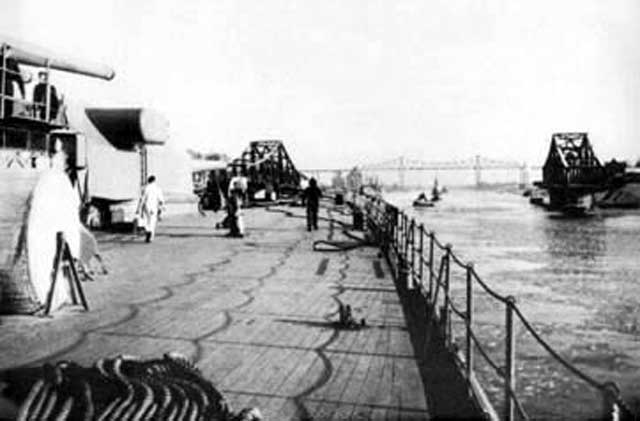 |
| German battleship Tirpitz sails through the Kaiser Wilhelm Canal during its return to Wilhelmshaven on 12 January 1942. |
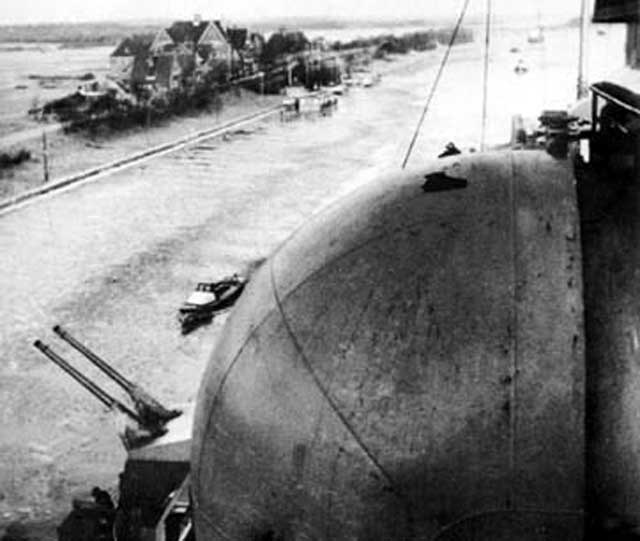 |
| German battleship Tirpitz sails through the Kaiser Wilhelm Canal during its return to Wilhelmshaven on 12 January 1942. |
 |
| Tugs assisting German battleship Tirpitz as it sails through the Kaiser Wilhelm Canal during its return to Wilhelmshaven on 12 January 1942. |
 |
| Life magazine on 12 January 1942 features "Pacific Coast Defense." |
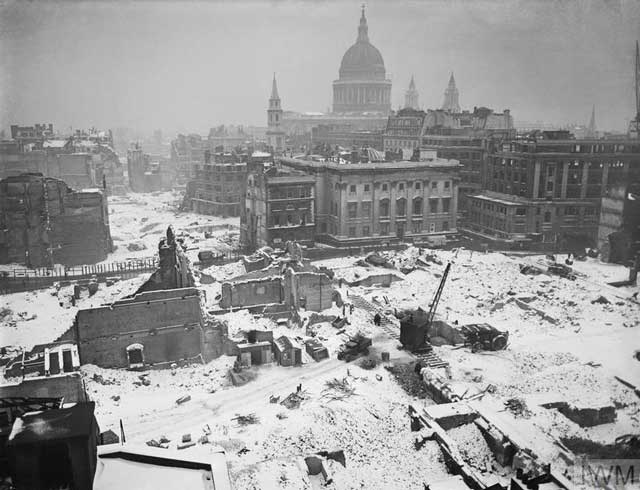 |
| "The destruction around St Paul's Cathedral caused by an air raid on London is softened by a heavy dusting of snow. A mobile crane and truck can be seen at work to clear up some of the debris." January 1942. © IWM (D 6412). |
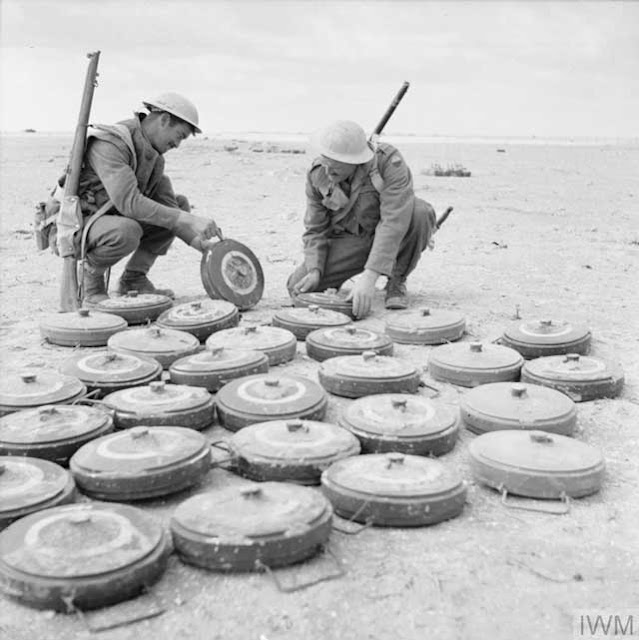 |
| "South African sappers making German Teller mines safe, 12 January 1942." © IWM (E 7602). |
 |
| Reinhard Heydrich speaking with Hermann Goering at Goering's birthday celebration, Jan. 12, 1942. |
American Homefront: President Franklin D. Roosevelt signs Executive Order 9017 establishing the National War Labor Board (NWLB). William Hammatt Davis is its first chairman. Its purpose is to prevent labor problems from interfering with the war effort. The NWLB sets wage controls for industries deemed vital to the war effort, including automobiles, shipping, railways, airlines, telegraph lines, and mining. The NWLB supersedes the National Labor Relations Board (NLRB) established in 1935. The NLRB remains in existence for matters deemed less important to the war effort and eventually resumes its original mission after the NWLB is discontinued in 1945.
The US Office of Price Administration decrees that hot dogs from now on must be made from a mixture of meat and soy meal. These are to be called "victory sausages."
Having enlisted on 10 January, the day after his recent title fight against Buddy Baer, boxer Joe Louis reports for duty at Camp Upton amid a media blitz.
 |
| Children emptying their piggy banks to buy war stamps. The Times of Munster, Indiana, 12 January 1942. |
1942
January 1942
January 1, 1942: Declaration By United Nations
January 2, 1941: Manila Falls to Japan
January 3, 1942: ABDA Command Announced
January 4, 1942: MacArthur on His Own in the Philippines
January 5, 1942: Soviets Plan General Offensive
January 6, 1942: US Army in Europe
January 7, 1942: Soviet General Offensive Opens
January 8, 1942: Hitler Sacks Hoepner
January 9, 1942: Battle of Dražgoše
January 10, 1942: Building the Jeep
January 11, 1942: Japan Takes Kuala Lumpur
January 12, 1941: Rommel Plans Counterattack
January 13, 1942: First Ejection Seat Use
January 14, 1942: Operation Drumbeat First Sinking
January 15, 1942: U-Boat Off NYC
January 16, 1942: Carole Lombard Crash
January 17, 1942: British Take Halfaya Pass
January 18, 1942: Soviet Paratroopers in Action
January 19, 1942: FDR Approves Atomic Bomb
January 20, 1942: The Wannsee Conference
January 21, 1942: Parit Sulong Bridge Battle
January 22, 1942: Parit Sulong Massacre
January 23, 1942: Japan Takes Rabaul
January 24, 1942: Battle of Makassar Strait
January 25, 1942: Kholm Surrounded
January 26, 1942: GIs Land in Europe
January 27, 1942: Battle of Endau
January 28, 1942: Rommel Takes Benghazi
January 29, 1942: First US Coast Guard Ship Sunk
January 30, 1942: Singapore Isolated
January 31, 1942: Army Group South Averts Disaster
2020

